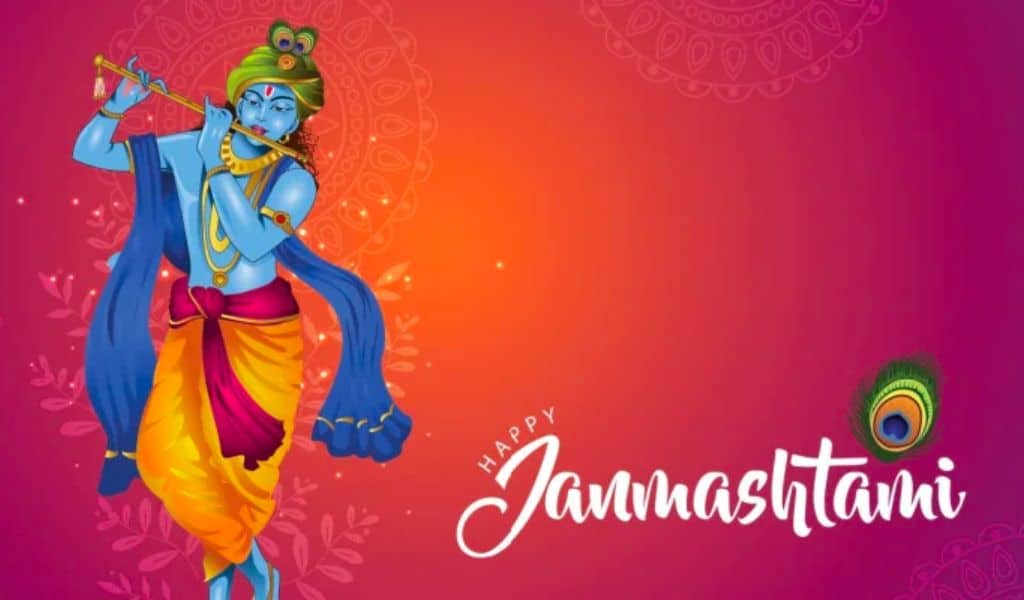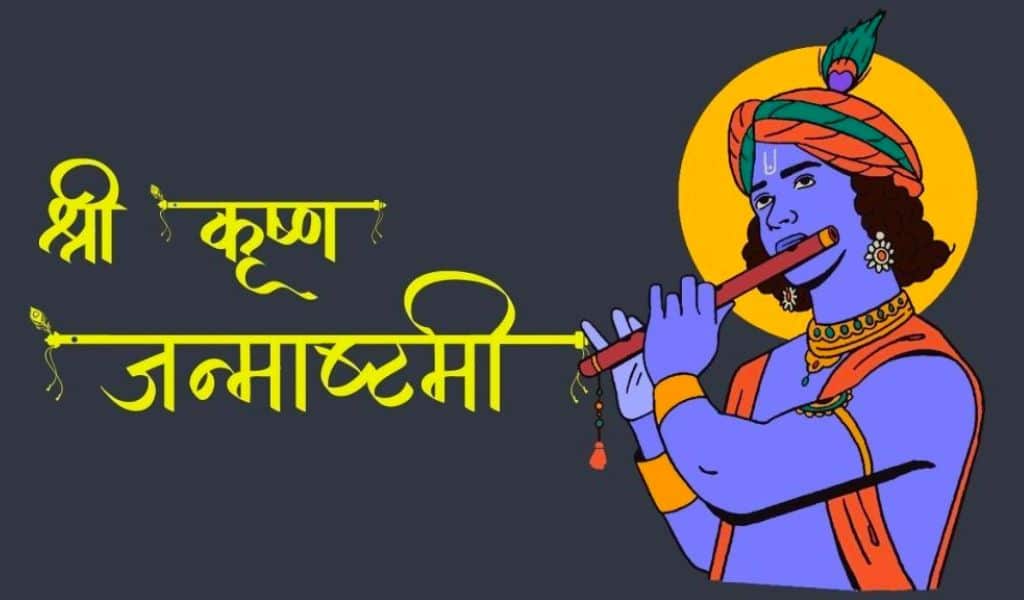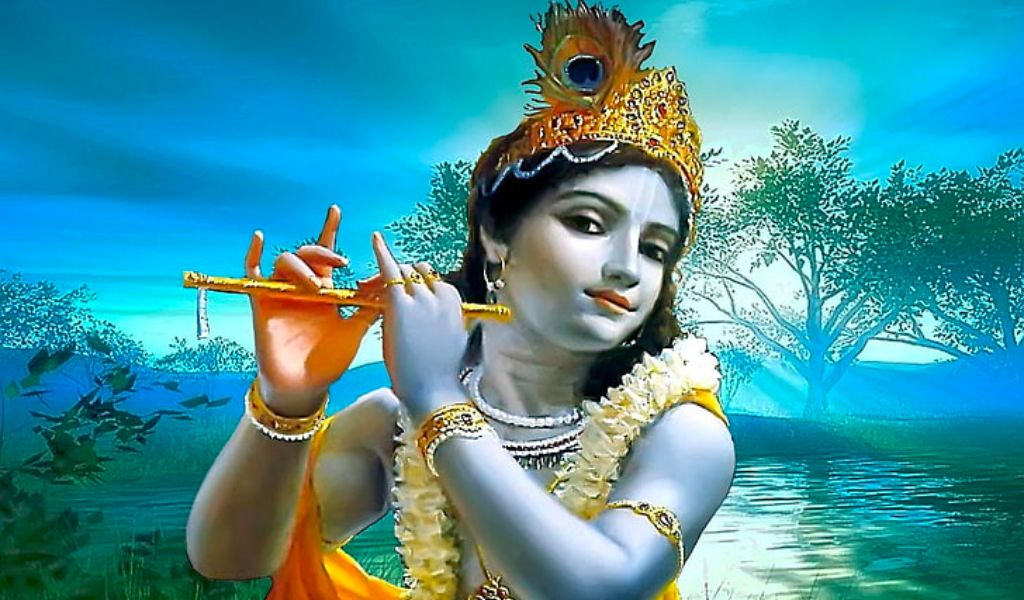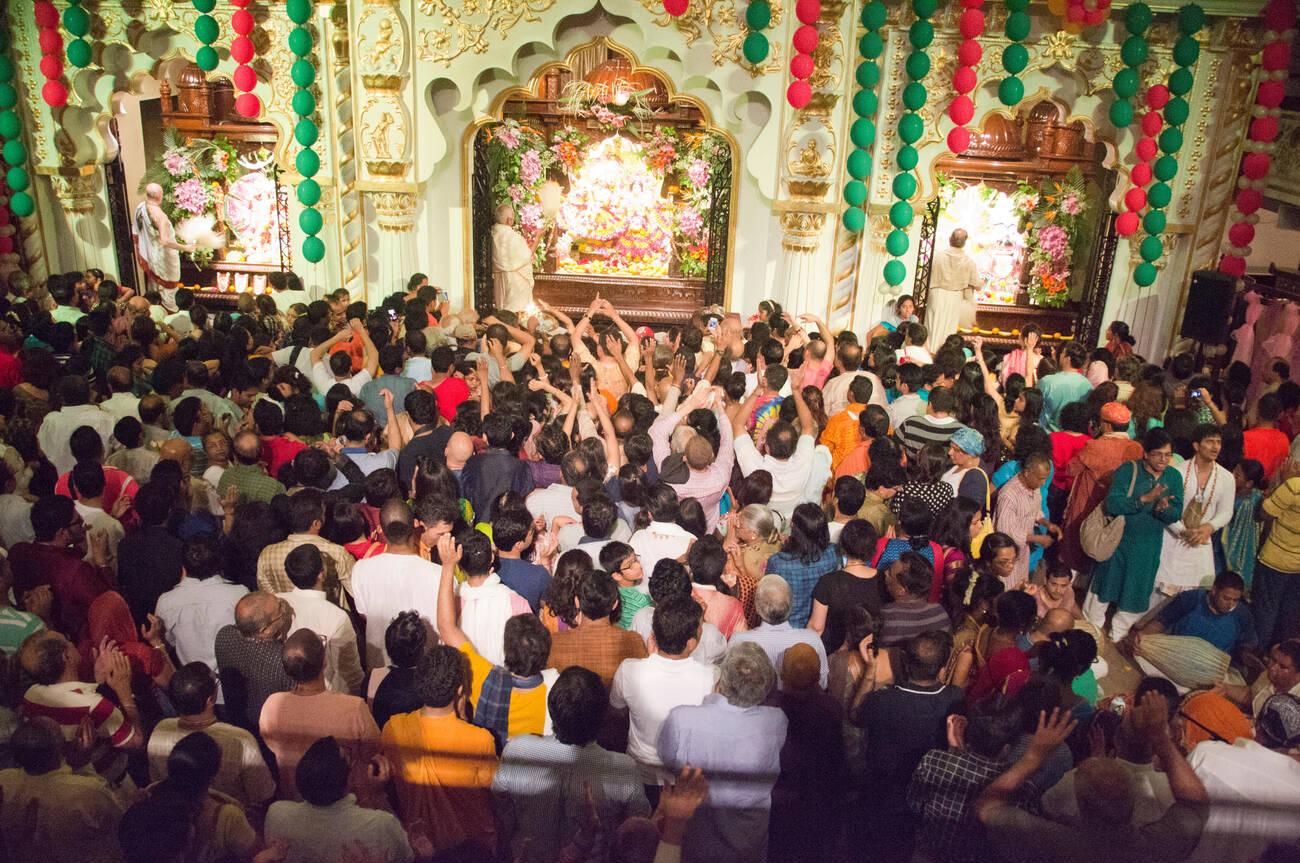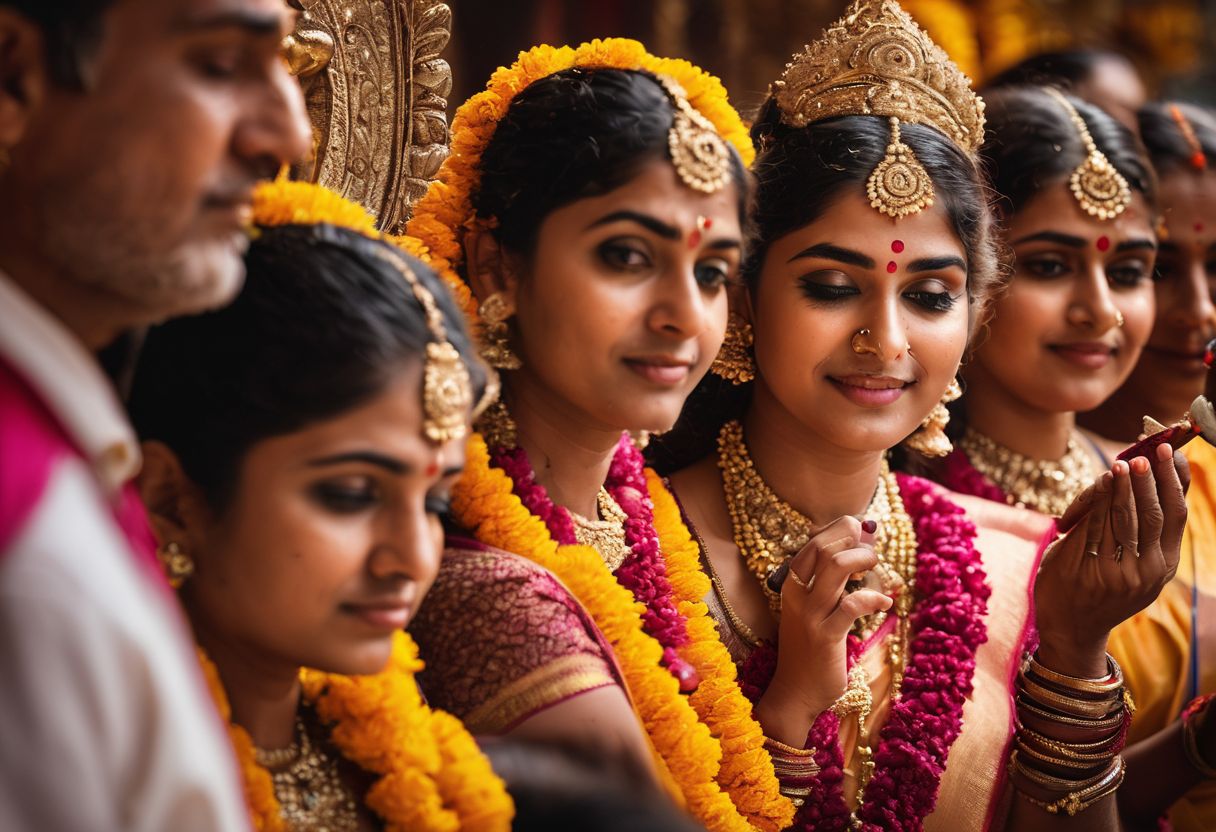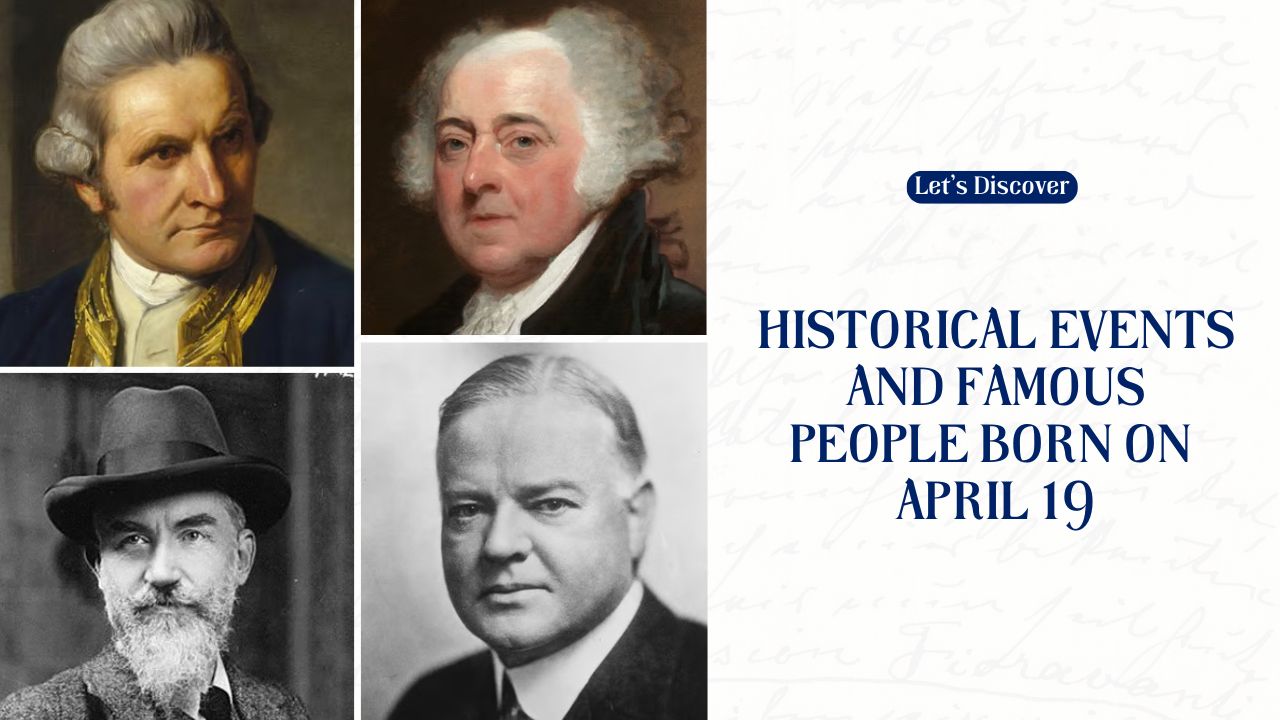Are you curious about the Janmashtami 2023 date? As there is still confusion and many different sources providing contradicting dates. The celebration of Krishna Janmashtami, an important event in Hindu mythology, varies from year to year and falls on either September 6 or 7 this year.
In this blog post, we will explain why there’s a debate over the exact date and share what makes it such a special day for Hindus around the world. So hang tight as we get ready to uncover all the facts and figures on Krishna Janmashtami!
Content Highlights
- Krishna Janmashtami 2023 is celebrated on both September 6 and 7 due to different interpretations of the correct date according to various panchangs.
- Devotional singing and dancing, fasting, prayer rituals as well as decorating idols are some of the most popular practices associated with Janmashtami celebration.
- Midnight is considered an important time during this festival that marks Lord Krishna’s birth into our world where devotees offer prayers & show their devotion through engaging in traditional activities such as bhajans or devotional songs.
- Different communities may discontinue up to five seven days for this special event with unique region specific offerings every day!
Krishna Janmashtami 2023 Date and Shubh Muhurat
According to Drik Panchang, Krishna Janmashtami 2023 will be celebrated on September 7. The Ashtami Tithi will begin at 3:37 PM on September 6 and end on September 7 at 4:14 PM. The Nishita Puja time will be from 11:57 PM to 12:42 AM on September 7.
Here are the details of the Shubh Muhurat for Krishna Janmashtami 2023:
- Ashtami Tithi: 6 September 2023, 3:37 PM to 7 September 2023, 4:14 PM
- Rohini Nakshatra: 6 September 2023, 9:20 AM to 7 September 2023, 10:25 AM
- Nishita Puja: 7 September 2023, 11:57 PM to 12:42 AM
Krishna Janmashtami is a major Hindu festival that celebrates the birth of Lord Krishna, the eighth avatar of Vishnu. It is a time for Hindus to celebrate the arrival of their beloved deity and to reflect on his teachings and example.
Confusion about the correct date
With Krishna Janmashtami 2023 just around the corner, many have questions about its exact date. According to different panchangs, some mark September 6 and some mark September 7 as the festivities for celebrating Lord Krishna’s birth.
This leads to confusion among devotees who are unsure about when they should begin their celebrations this year and hold nishita puja – a fixed point during the day that marks exactly when Lord Krishna was believed to have taken birth on Earth.
To determine an appropriate time slot, one must also take into consideration Ashtami Tithi which is considered auspicious by Hindus for prayerful activities and fasting; it begins at 03:37 PM of September 6th and ends at 04:14 PM on September 7th according to Drik Panchang.
Related Read: Holy 2023
Determining the auspicious time
Krishna Janmashtami 2023 will be celebrated on both September 6 and 7, due to the difference in interpretations of the correct date by different panchangs. According to Drik Panchang, the auspicious time for Nishita Puja during Krishna Janmashtami 2023 is from 11:57 pm to 12:42 am on September 7.
The timing is crucially important while celebrating Krishna Janmashtami as it marks the exact birth moment of Lord Krishna. It is customary that fasts are broken at midnight after worshiping Raas Leela deities and offering aarti and flowers.
Rituals like bathing God idols in milk or Ganga jal should be performed shortly before midnight as part of the puja preparatory rituals. Ashtami Tithi along with Rohini Nakshatra also carries special significance while determining an appropriate date for Janmashtami celebrations, which need to be adhered strictly depending upon one’s tradition and custom following criteria.
The Significance of Krishna Janmashtami
Krishna Janmashtami is celebrated to commemorate the birth of Lord Krishna, a Hindu God and an important figure in Hindu mythology.
Celebration of Lord Krishna’s birth
Krishna Janmashtami is an important Hindu festival that marks the birth of Lord Krishna. Hindus celebrate this day as a time to express their devotion and joy in remembering one of the most beloved incarnations of God.
According to the Hindu tradition, Lord Krishna was born under a Rohini Nakshatra on Ashadha shukla paksha ekadashi (eleventh day during waxing phase of moon) in the month of Shravana or Bhādód.
This auspicious occasion signifies Lord Krishna’s special and miraculous appearance as it was believed that he would lighten up Mother Earth with truth and righteousness by crushing all forms evil.
Importance in Hindu mythology
Krishna Janmashtami is an annual Hindu festival that marks the birth of Lord Krishna and celebrates his life. In Hindu mythology, Krishna is revered as a supreme god who brought comfort and prosperity to humanity by defeating numerous demons.
He performed many miracles during his lifetime and presented countless religious teachings which are still relevant today. His childhood tales are celebrated in songs, stories, recitals, art form, poetry and prayers during this festive celebration.
Along with Gokulashtami or Govardhan Puja festivities on Ashtami tithi (eighth day from new moon period), Hindus globally commemorate Janmashtami in reverence for Lord Krishna – it’s said when one performs acts of service or worships him on this special day they will be blessed with eternal bliss and redemption from all their sins.
Krishna Janmashtami Rituals
On this auspicious festival, devotees observe a fast and pray to Lord Krishna, along with singing devotional songs and performing traditional dances. They also decorate the deity’s idols and celebrate during midnight hours.
Fasting and prayers
During Janmashtami, devotees observe fasting as part of the celebration. This entails abstaining from grains and consuming only milk and fruits for a period of 24 hours. With the start of abhishek on Sept 6th evening in Janmashtami 2023, it will mark the beginning of fasting.
With prayers being one of the essential aspects during this festival, devotees chant sacred mantras devotedly to pay their respects and love for Lord Krishna. In addition to chanting verses from Bhagavad Gita, knowledgeable priests show their devotion by performing various Puja rituals through story narration (leelas) about Lord Krishna’s life principle acts with cultural singing and dancing associated with each situation.
Such thoughtful contemplation creates an intimate spiritual atmosphere that connects the worshiper spiritually to Lord Krishna within oneself. As such this highly sublime act of prayer He summitts inner peace upon them all who pay deep reverence directed towards Him – upholding Dvaita Advaitha philosophy that delivers pure knowledge via Guru-Disciple relationship which helps spread Love Divineness around us!
Devotional singing and dancing
Devotional singing and dancing play an important role in Janmashtami celebrations, as they are ways for devotees to pay homage to Lord Krishna. These activities provide a cheerful atmosphere and offer opportunities for people of all ages to come together in praise and admiration of the divine being.
During Janmashtami, devotees sing bhajans or religious songs praising Lord Krishna; some dance with enthusiasm expressing their love and devotion towards Him. Traditional Bharatanatyam dancers often perform performance pieces celebrating the birth of Krishna while other schools may hold kirtan competitions – both art forms being integral parts of welcoming Shri Krishn into the world on this joyous day.
Devotional singing and dancing during this time can help worshippers focus their minds peacefully on Lord Krishna’s beauty, grace, kindness, wisdom and teachings while bringing friends & families closer together as they share these spiritual moments of reverence for God almighty.
Krishna idol decoration
Krishna idol decoration is an integral part of Janmashtami celebrations. Traditional materials such as clothes, jewelry, and ornaments are used to decorate the idol of Lord Krishna.
Traditionally, bells around the neck and anklets for feet form a part of Lord Krishna’s dress code. Brightly colored fabrics in reds, blues, and greens are often draped around the statue to give it a unique look.
Regional flowers and leaves hand-picked from temples are also used for further adornment with some communities opting for a carpet made out of leaves to lay at his feet providing Him honorable seating arrangements.
Seating arrangements include a pedestal surrounded by butter lamps that signify purity & charity along with other offerings that symbolize devotion towards one’s faith. Full moon night is auspicious for such decorations people believe Shiva himself descends on this day in piousness accompanying riches from heaven adding into serenity sayings like ‘Ekadashi Teej ka Gaurav har manaya’.
Midnight celebrations
Midnight on the day of Krishna Janmashtami holds special significance in Hindu mythology. According to stories and scriptures, Lord Krishna was born at midnight or in the dark hours before dawn.
Thus, during this time of deep silence, devotees honor Lord Krishna’s manifestation into this world. People around India perform various rituals such as singing devotional songs and bhajans and offering prayers to their beloved God until past 12:00 AM.
Furthermore, many homes are decorated with lamps that burn all night long on the occasion of Janmashtami as a symbol of devotion for Lord Krishna. Other customs also include sweet dishes made especially for him like petha/ halwa/ payasam which members offer to their deity on this auspicious evening!
Why Does Janmashtami Celebrate for 2 Days?
Krishna Janmashtami stands out among Hindu festivals in celebrating for two days – find out why and learn the different interpretations of its significance here.
Smarta and Vaishnav traditions
The Smarta and Vaishnav traditions both celebrate Janmashtami, the birth of Lord Krishna, but in different ways. The Smarta tradition observes Janmashtami on one day usually according to the lunar calendar.
Meanwhile, the Vaishnav tradition celebrates it for two days with the first representing the day before Lord Krishna’s arrival and the second his actual birth. For this reason, devotees are able to observe a range of rituals including fasting prayers as well as taking part in devotional singing or dancing activities.
Furthermore, they can also partake in decorating idols and attending late-night or midnight celebrations held to mark their auspicious arrival into our world. In essence, each tradition plays its own part in honoring Lord Krishna not just through festivities but prayerful reverence too.
Different interpretations and practices
Janmashtami is celebrated in many different ways, depending on the region and community. In India, there are two main traditions that celebrate Janmashtami – Smarta (or Advaita) and Vaishnava. The Smartas observe one day of fasting and celebration while the Vaishnavs stretch it out over two days.
Generally, communities in South India honor Janmashtami for a day while some regions such as Udupi in Karnataka extend it up to five or seven days with special offerings each day! Customary celebrations include offering prayers at temples dedicated to Krishna followed by rituals such as bathing idols representing Lord Krishna with milk, honey, yogurt, and water amongst others as well as singing bhajans (devotional songs).
Additionally, small clay figures of baby Krishna are decorated along with chariots carrying an idol of Him over thirteen streets signifying Indian festivals in various parts of India.
Janmashtami: Unknown Facts
- The exact date of Krishna’s birth is unknown. However, it is traditionally celebrated on the eighth day of the dark fortnight of the month of Bhadrapada, which falls in August or September.
- The name “Krishna” means “black” or “dark.” This is because Krishna was born with dark skin, which was considered to be a sign of beauty and divinity.
- Krishna was born in a prison. His mother, Devaki, was imprisoned by her brother, Kamsa, who was afraid that Krishna would one day kill him.
- Krishna was smuggled out of the prison by his father, Vasudeva, and taken to Gokul, where he was raised by foster parents, Nanda and Yashoda.
- Krishna is known for his playful and mischievous childhood. He is said to have stolen butter, played pranks on his friends, and even killed a demon named Putana.
- Krishna is also known for his heroic deeds. He killed the demon Kamsa, rescued the people of Mathura from his tyranny, and helped to establish the rule of Dharma.
- Krishna is considered to be an avatar of Vishnu, one of the three main gods of Hinduism. He is also worshipped as a god of love, compassion, and protection.
- Janmashtami is a major festival in India and is celebrated with great fanfare. People fast, pray, and sing songs in honor of Krishna. They also visit temples and participate in processions.
- Dahi Handi is a popular festival associated with Janmashtami. It involves people forming human pyramids to break a pot of curd hung high up in the air.
- Janmashtami is also celebrated in other parts of the world, such as Nepal, Bangladesh, and Sri Lanka.
The Importance of Ashtami Tithi and Rohini Nakshatra
Understanding the significance of these two elements holds a key to accurately determining Janmashtami’s date, so keep reading to find out more!
Significance in determining the Janmashtami date
The celebration of Krishna Janmashtami is set around the Ashtami Tithi and Rohini Nakshatra which holds great significance in Hinduism. Astrologically, Shri Krishna was born on a Wednesday with Ashtami Tithi wherein the moon was situated in the Taurus sign along with Rohini Nakshatra as mentioned in Shrimad Bhagwat Purana.
Keeping this heavenly alignment intact every year, devotees celebrate Janmashtami by observing fasts and prayers at specific time frames. In the current year, the Ashtami Tithi is set to commence at 3:37 p.m. on September 6 and conclude at 4:14 p.m. on September 7. Additionally, the Rohini Nakshatra will initiate at 9:20 am on September 6 and conclude at 10:25 am on September 7..
All these timings must be followed according to one’s local timezone and geographical area for maximum spiritual benefit during the celebration. Thus timing plays a major role in observing one of the longest-standing traditions related to Hinduism- Krishan Janmashtami.
Auspicious combination for celebrations
The date of Janmashtami 2023 is determined according to the Tithi and Nakshatra. The observance time for Krishna Janmashtami begins with Ashtami Tithi during Nishita time, which starts at 3:37 pm on September 6th and goes until 4:14 pm on September 7th.
Alongside this, the Rohini Nakshatra will start from 9:20 am on September 6th and continue till 12 pm noon that day. Hindus observe these auspicious combination factors in order to celebrate a successful festival that brings spiritual significance as well as prosperity into their lives.
Together, these elements determine the exact moment of Lord Krishnas birth – which marks when festivities such as prayer rituals, fasting, devotional singing and dancing begin – making an auspicious forward movement towards enlightenment among its participants.
Janmashtami Celebrations Around the World
From India to the USA, Japan, and South Africa, people all around the world come together to celebrate Janmashtami. Discover how different cultures honor Lord Krishna’s birth!
International observance of the festival
Janmashtami, the festival celebrating Lord Krishna’s birth is celebrated in various countries around the world. Devotees from far and wide join together in this momentous occasion to commemorate and honor Krishna’s birth.
Apart from India where it is held with grandeur, Janmashtami celebrations are also observed in East African countries like Kenya, Mauritius, Tanzania and Uganda as well as places like Fiji Islands and Guyana.
Celebrations of this festival can vary country by country as devotees bring their own distinct cultural observance to commemorate this auspicious day.
In some countries such as Bangladesh or Sri Lanka there are unique customs associated with observing Janmashtami that comes from their local culture – from exchanging gifts among relatives to performing garbha dances that express joy about Lord Krishna’s birthday –passtimes instill a sense of festivity throughout the community.
Cultural significance and customs
Janmashtami is an important festival in Hindu mythology, celebrating the birth of Lord Krishna. The day carries immense cultural significance throughout India and across the world, with devotees engaging in rituals, such as fasting, prayers and devotional singing.
People flock to temples to seek blessings from Lord Krishna and perform various poojas as part of their traditions. Through song and dance performances, traditional enactments of stories centered around Lord Krishna have become a key part of Janmashtami celebrations.
The decoration of the lord’s idol forms an essential component honoring his birth – bright colors are added to make it look attractive while flowers are also presented as offerings.
During this special occasion, many families take out some time to read passages from religious scriptures like Bhagavad Gita or Vishnu Sahasranama – two texts attributed primarily to him which elucidate upon spiritual wisdom held by ancient sages living centuries ago.
Janmashtami Dates for the Next 5 Years
Find out the exact dates of Janmashtami and plan ahead for the annual celebration of Lord Krishna’s birthday!
| Year | Date |
|---|---|
| Janmashtami 2023 | 7 Sep |
| Janmashtami 2024 | 26 Aug |
| Janmashtami 2025 | 16 Aug |
| Janmashtami 2026 | 4 Sep |
| Janmashtami 2027 | 25 Aug |
| Janmashtami 2028 | 13 Aug |
Planning future celebrations
It is important to mark the calendar for upcoming Krishna Janmashtumi celebrations so that you can prepare well in advance and enjoy the festivities. Check out Janmashtami dates for the next 5 years on reliable Hindu websites and portals, as per your region, culture and beliefs.
Keeping in mind Rohini Nakshatra as it is considered very auspicious for Janmashtmi puja; devotees should make sure they know about these timings so that their worship gets accepted by Lord Krishna himself! Furthermore, remember to keep a tab on activities like fasting or bait logging depending upon how your family celebrates this festival to avoid any last minute confusion.
Marking the calendar for upcoming years
Knowing when to observe Janmashtami is very important, especially for devotees preparing for celebrations in advance. Though the exact date of Krishna’s birth anniversary may differ each year according to the Hindu calendar, it falls on the eighth day (Ashtami) of the dark fortnight (Krishna Paksha) in either August or September.
For instance, Janmashtami 2023 will be celebrated on September 6 and 7 which marks this event two days a year. To find accurate dates in upcoming years, one should rely upon his/her almanac—specifically pinning down Ashtami Tithi and Rohini Nakshatra as they are essential combinations to determine any festivals’ accurate date & time.
Once these ideas are sorted out, one can easily note all further details related with organization like making suitable arrangements or inviting people for gatherings at their residence or nearby temples where religious activities take place extensively during such occasions throughout India.
Frequently Asked Questions (FAQs)
Now here are some common FAQs on this topic.
1. When is Janmashtami 2023?
Janmashtami 2023 will be celebrated on September 7th, 2023.
2. What is the significance of Janmashtami?
Janmashtami marks Lord Krishna’s birthday and has been celebrated for thousands of years by Hindus as a festive occasion in honor of his divine birth.
3. Why do some people observe the day on September 6th instead?
Some Hindu communities observe Janmashtami one day earlier than other groups due to varied lunar dates when calculating the exact timing for annual festivals such as this one.


